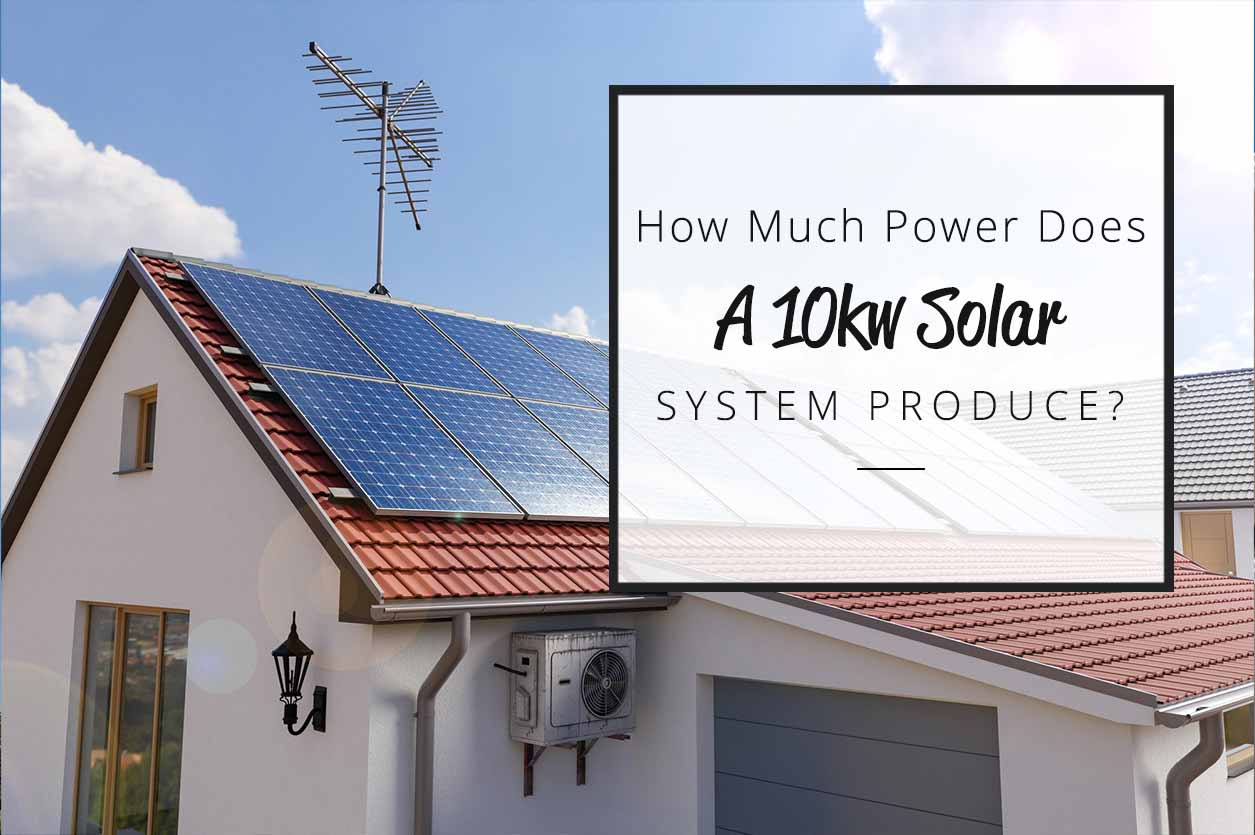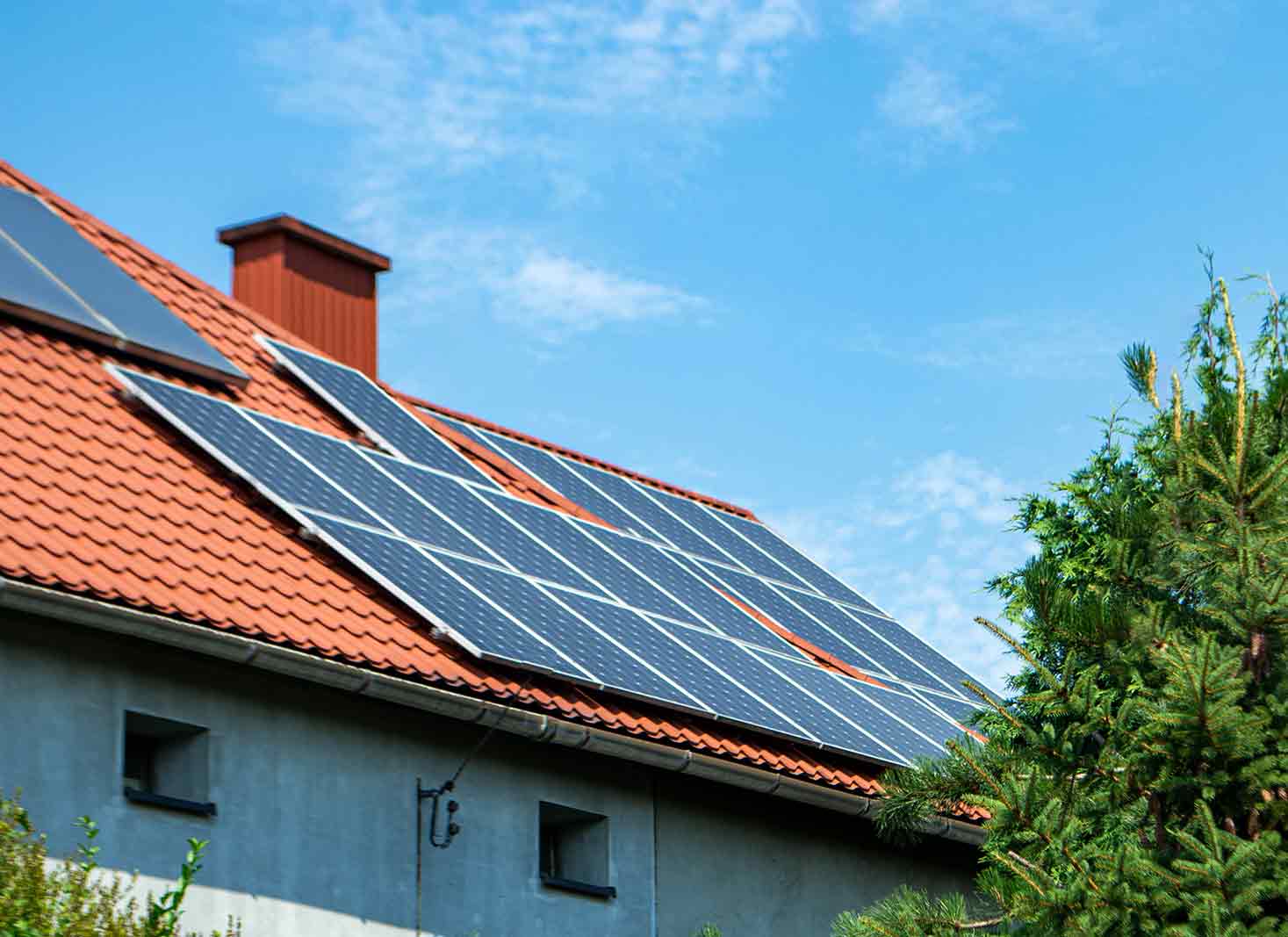Home How Much Power Does a 10kW Solar System Produce?
How Much Power Does a 10kW Solar System Produce?
Thinking about switching to solar energy? Nice one, you’re in good company. Homes by the millions globally are taking the plunge. Solar energy is emerging as the go-to choice for an eco-friendly, cost-effective, and accessible power source. No matter if your place is a large home or a cosy little store, a 10 kW solar system could be just what you need.
A 10 kW system will produce an estimated 40 to 55 kilowatt-hours (KWh) on an average day. This can amount to 14,600 to 20,000 kilowatts per hour (14,600 KWh) every year. This power output may differ in your home due to factors like the location and number of solar panels, the amount of sunlight in that area, the pitch of the roof, etc.
In this article, we will learn more about the 10 kW solar system, its daily output, and factors that affect solar panel power output.

Table of Contents
ToggleWhat are the factors that determine solar panel power output?
Many factors will determine the amount of power produced by the solar system. They include;
1. Number of solar panels
The number of solar panels available will determine the amount of power produced by a solar system. This is because solar panels are designed to capture the maximum sunlight they can. If you have an insufficient amount of solar panels, they will not be able to capture the requisite amount of sunlight.
Make sure to go for higher-efficiency solar panels that can optimize the sunlight. People with small roofs can purchase the recommended high-rating solar panels to reduce the number needed without limiting the solar system.
2. Location of home
Different locations experience different weather patterns. Solar systems in places with high levels of sunlight and long summers will produce more power than the same solar system in a place with low levels of sunlight, long winters, or rainy seasons.
Also, homes located near trees, forests, or skyscrapers all of which can shield your house from the sunlight may experience lower power output. Houses in open spaces have more access to direct sunlight and on average have better power outputs.
3. The amount of sunlight
If you live in an area with more winters or sunlight, you may need to get more batteries to save power for days without sunlight. This also means that the solar systems will have a lower power output.
The more sunlight you receive the higher the power output of the solar system. If an area receives very little sunlight, solar systems may be ineffective as they will not be able to produce enough power to maintain a household.
What size solar battery is needed for a 10 kW solar system?
Most households use 30% of their power during the day and 70% at night. Why does that matter? Solar systems produce 100% of their energy throughout the day, so you will need to store 70% of the power produced for later use.
10kWh solar systems produce about 50kWh of electricity per day (10kW represents max output per hour at peak times).
Battery size formula:
Daily consumption X 0.70 = Battery size in kWh
50kW x 0.70 = 35kWh

What can I run on a 10kW solar system?
We have already established that a 10kW solar system will produce an estimated 40 to 55 kWh daily depending on various factors. What is 40 kWh of power in a home? Well, for an average-sized 4 – 6 bedroom house, a 10kW solar system will be able to power the following appliances; all lights, televisions, laptops, refrigerators, washers, dryers, central air conditioning, and a pool pump.
Here is a breakdown of the average daily power usage of these appliances;
- 10 7-watt LED lights ( 420 watts)
- 2 LCD televisions (300 watts)
- 2 Laptops (1200 watts)
- Microwave (450 watts)
- Washing machine (250 watts)
- Clothes dryer (1050 watts)
- Dishwasher (2700 watts)
- Freezer (1000 watts)
- Refrigerator (900 watts)
- Central air conditioner (9600 watts)
- Wifi (144 watts)
- Pool pumps (16,000 watts)
TOTAL; 34,000 watts daily for a 4-6 bedroom house using regular appliances.
The 10kW solar system produces about 40kWh daily so this means that a 10kW solar system with an adequate amount of solar panels and batteries will be able to power all major house appliances and provide enough electricity for the average household. It is important to note that the more high-wattage appliances you have, the more power will be used by the home.
How much does a 10kW solar system cost
The 10kW solar system usually costs between $8,865 – $10,261 in Australia. The cost of the 10kW systems depends mainly on location, the quality of components, and the company you choose to handle the installment.
Although several Australian states offer solar rebates, these solar rebates vary according to the size of your system and the average hours of sunshine your postcode receives.
Solar rebates usually take about $4,000 – $4,800 off the cost of a 10kW solar system leaving you to pay the balance out of pocket. The Australian solar rebates are issued to solar system owners in the form of small-scale technology certificates (STCs). These rebates are scheduled to end in 2030 and have continued to decline due to the increased demand for solar systems.
Is a 10kW solar system worth it?
Purchasing a 10kW solar system might seem very costly, so is it worth it? Well, YES. solar systems have proven their worth over and over again and are a worthwhile investment for any household. Homeowners who install solar systems will save money for the lifetime of the solar system which is about 25 – 30 years.
This is because they have non-existent electricity bills and also receive solar rebates that help to pay off the cost of the system. They also receive federal and state incentives like feed-in tariffs that pay for any electricity sent back to the grid.
The potential savings from a solar power system can be thousands of dollars a year. Installing a 10kW solar system is a great investment for Australian homes with high levels of electricity consumption or businesses with relatively small electricity needs.
With electricity prices drastically rising across Australia, many households and businesses are transitioning to solar power to reduce their power bills, especially now that solar panel prices in Australia are at a record low. It is also a good choice as a good quality system will start paying for itself in as little as 3 or 4 years.
Can I go off-grid with a 10kW solar system?
Going off-grid means that your house will no longer receive electricity from the national grid. This means an alternate electricity source is necessary and a good choice is solar energy. While going off-grid is a very serious choice, it can be done well if you choose to.
You can go off-grid with a 10kW solar system. However, this depends on the amount of electricity used daily in the household. The overall installation cost of a 10kW solar system suitable for going off-grid will be in the range of $10,000 to $15,000. You can install high-capacity solar batteries to store the solar energy for use after sunlight.
A 10kW solar system produces an average of 40kWh daily, so you have to make sure that the household does not use more than that. This is because if the 10kWh cannot support the household, going off-grid might not be a good option. You can decide to completely power your household with solar power and remain on the grid in case of emergencies.
Compare Solar Panel Quotes
Table of Contents
Toggle









